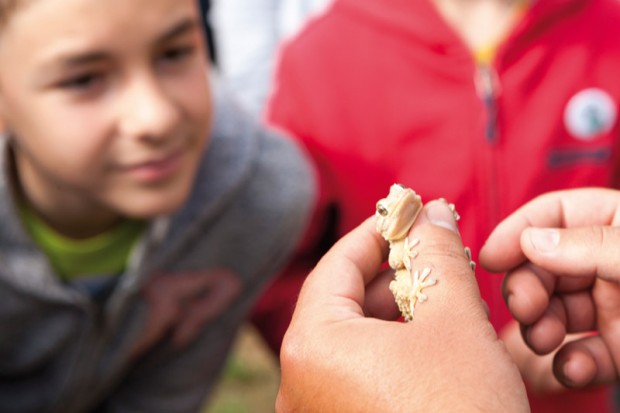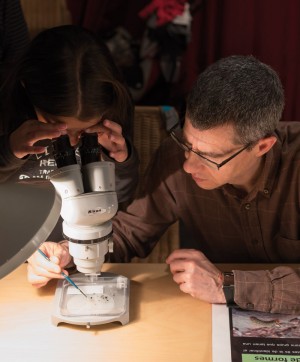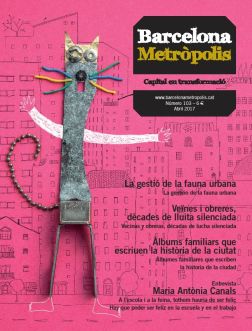A BioBlitz is a species identification exercise that takes place over twenty-four hours and is open to everyone. This method of bringing together professional scientists, naturalists and the general public is highly effective.

Species identification activities at BioBlitzBcn 2016, in the gardens of the Botanical Institute of Barcelona (IBB) and the area adjacent to Montjuïc Park.
Photo: J.M. de Llobet / Natural Sciences Museum of Barcelona
In the words of the North-American entomologist Edward Wilson, a BioBlitz “is an exhaustive search for species in a particular area, normally in city parks, with the help of schoolchildren, volunteer groups and others, always aided by biologists, in a scientific race against the clock”; in other words, a survey conducted in a twenty-four hour timeframe.
These initiatives come about from the need to take an inventory or conduct a follow-up study of biodiversity, both of which require a large amount of fieldwork and the participation of many people. They have a two-fold purpose: firstly, to get more in-depth knowledge of the biodiversity and, secondly, to raise public awareness of the need to document and preserve this biodiversity. It is also a good way of getting the public involved in science and of breaking down barriers, giving people the opportunity to collaborate in a genuine scientific study.
In 2010 the University of Barcelona and the City Council organised the first BioBlitzBcn. Since then, the project has grown in size and strength and is now led by the Museum of Natural Sciences with active support from other Council departments, the Museum’s Society of Friends and a range of other naturalist organisations. A BioBlitz is organised every year with the aim of increasing knowledge of local biodiversity. Since it started, over 3000 people have taken part and around 1500 species have been identified.

Species identification activities at BioBlitzBcn 2016, in the gardens of the Botanical Institute of Barcelona (IBB) and the area adjacent to Montjuïc Park.
Photo: J.M. de Llobet / Natural Sciences Museum of Barcelona
It is worth pointing out that, as well as the scientific significance of the research – which has led to the identification of species that had not been found before on the Iberian Peninsula – the data obtained has also been used to improve the way the city’s green spaces are managed. This project should therefore be seen as a three-dimensional one that encompasses the raising of public awareness of biodiversity by getting the public actively involved; the scientific results themselves; and, in some cases, the contribution to the management of green spaces.
We are not really used to seeing the city as somewhere that has a variety of habitats that are potentially home to a wide range of flora and fauna. The urban environment is a diverse structure that allows for a varied and dispersed mosaic of habitats. With the global environmental crisis, it is likely that there will be increased awareness of biodiversity and everything that relates to it. Barcelona is a model city, in this sense, as it has a wealth of environments in a relatively small area.
Projects that help to raise public awareness of new social and environmental challenges are of vital importance to society and must therefore be prioritised. At present, BioBlitzBcn is the only activity of its kind in the whole of Spain and the non-English-speaking world, which makes it even more significant.



